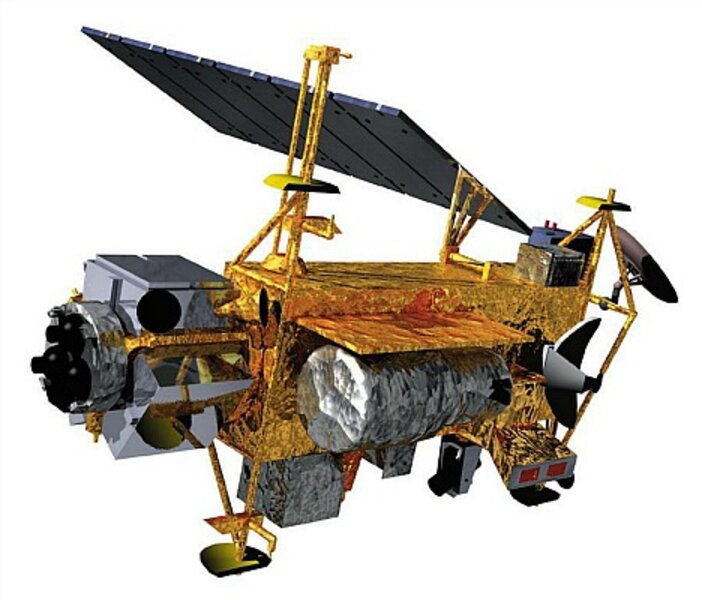NASA says 'we may never know' where runaway satellite crashed
Loading...
| Atlanta
The mystery of where a runaway research satellite plunged to earth may remain just that unless NASA receives "credible" leads in the next few days as to the whereabouts of the fallen space junk, one of the agency's top scientists says.
Best estimates from several international space agencies put the reentry point of the Upper Atmosphere Research Satellite, a bus-sized space traveler launched from the Space Shuttle in 1991, in the Pacific Ocean southwest of Washington State, in which case some 26 jagged chunks of space debris – some weighing as much as 300 pounds – most likely dropped into the ocean and disappeared.
"We may never know" where the satellite pieces landed, Nick Johnson, the chief scientist with NASA's Orbital Debris Program, told reporters on Saturday. So far, NASA has not been able to confirm as credible several reports from the Calgary area – including YouTube video and Twitter accounts – that purported to show pieces of the satellite raining down early Saturday morning.
IN PICTURES: Stuff in Earth orbit
But the agency also acknowledged that it does not know exactly when the satellite entered the earth's atmosphere, which leaves open the possibility that pieces reached land. The best guess is that the UARS fell through the atmosphere at 12:16 A.M. Saturday, which would have put a debris field up to 500 miles long off the west coast of the US. The agency acknowledged, however, that even a minor miscalculation could mean debris fell on Washington State or parts of southwestern Canada.
"Because we don't know where reentry point actually was, we don't know where debris field might be," said Dr. Johnson. "I've got no reports that I've seen that talk about people who might have recovered debris, but we'll continue to keep our eyes and ears open, and if we receive any reports like that we'll try to go verify."
Uncontrolled reentry of man-made space junk is fairly common. But the size of the UARS – it weighed about 6 tons – made it the largest runaway reentry of a satellite since Skylab fell in 1979, with some pieces landing in Australia.
The UARS returning uncontrolled to earth caught the public's imagination and even raised mild concern, though chances of anybody getting struck by debris were about 1 in 3,200. It also drew attention to the growing amounts of space junk orbiting the earth, as well as the sheer difficulties of tracking orbiting material as it reenters the earth's atmosphere.
Up to the last minutes before impact, NASA and other space agencies adjusted their predictions as the spacecraft seemed to skip and tumble across the outer skin of Earth's atmosphere. But more than 12 hours after orbiting space sensors could no longer find the satellite in orbit, NASA scientists lean toward the theory that at least most of the satellite chunks missed land.
"There were several folks along the western coast of North America and the US northwest and Canadian southwest that were actually looking to observe UARS as it came over, and every one of those attempts came up negative," said Mr. Johnson. "That would suggest that reentry did occur before it reached the North American coast, and most of the debris fell into the Pacific."





